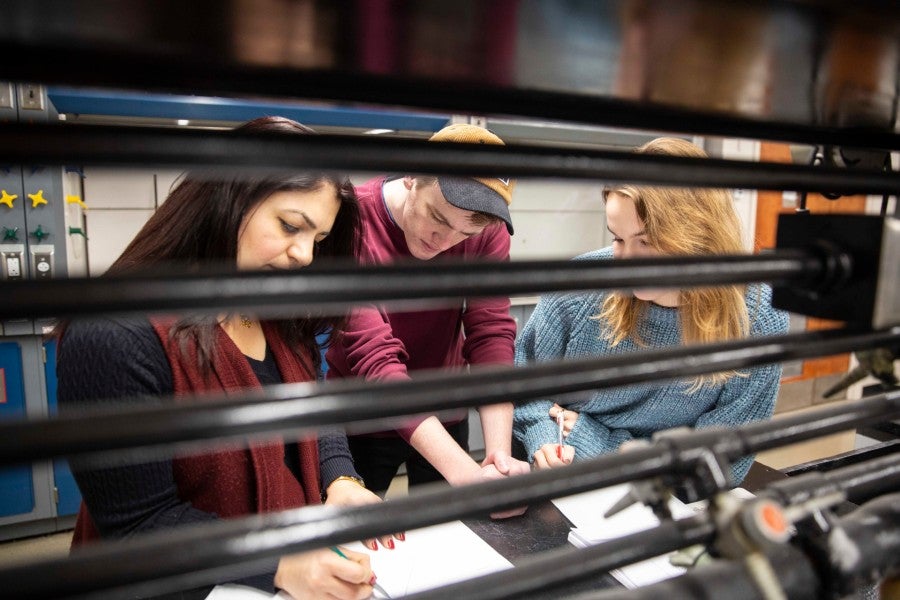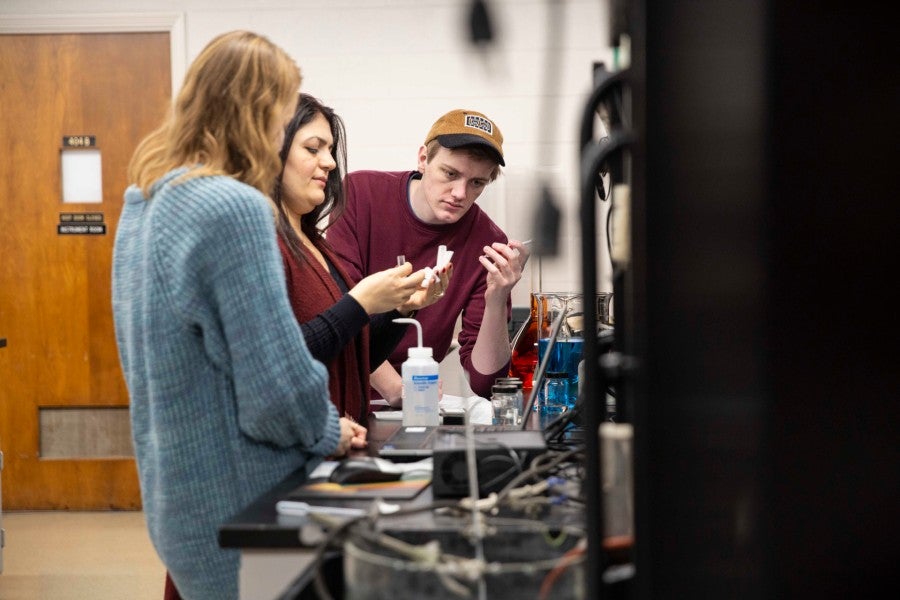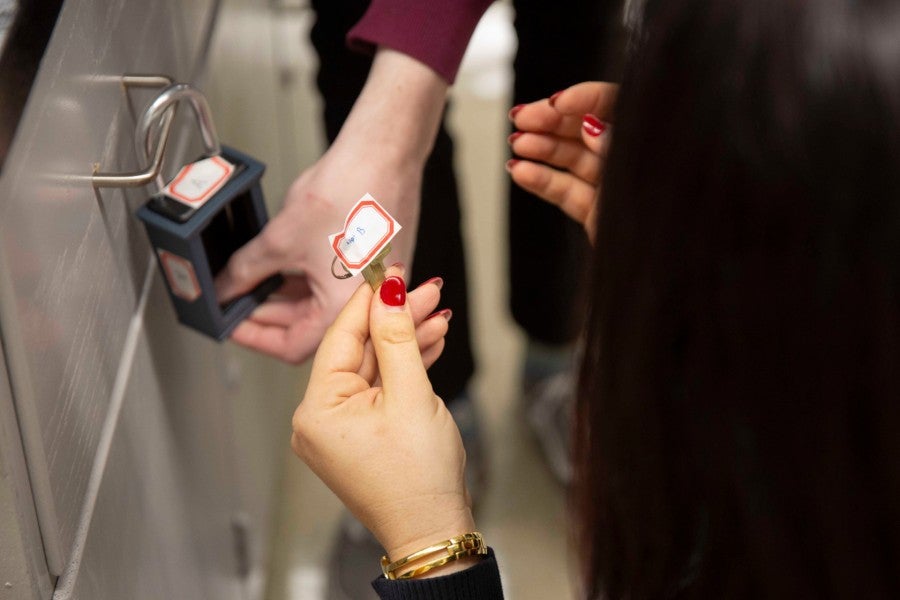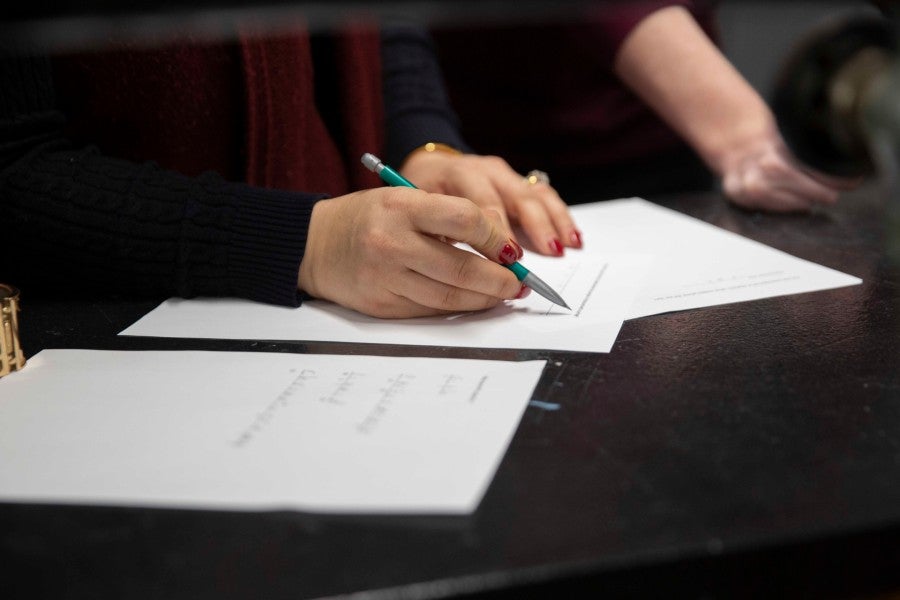Lipscomb professor designs escape room experience for students’ final lab
Matt Vergne’s creative approach to chemistry lab techniques was published in an academic journal.
Kalli Groce |

Assistant Professor Matt Vergne has incorporated an escape room approach to his serious teaching strategy in the chemistry and biochemistry department.
Students are days away from escaping their fall 2019 exams, but those in Matt Vergne’s class already escaped their final chemistry lab!
Escape rooms have become quite popular as a fun way to spend time with friends, but Vergne, assistant professor in Lipscomb’s Department of Pharmaceutical Sciences and the Department of Chemistry and Biochemistry, has incorporated this fun approach into serious teaching strategy and has won praise for the idea.
For the final exam in his Instrumental Methods of Analysis Chemistry Lab, students were surprised to find an hour-long “escape lab,” created by Vergne and designed to employ the teamwork and practical application of skills that they’ve worked on for an entire semester.
His creative approach not only benefits students by introducing an element of fun while reinforcing the knowledge students have gained over the course of the semester, but it was recently recognized as innovative by the Journal of Chemical Education, which published Vergne’s article about development of the lab exercise.

The clues and puzzles require students to use a variety of instruments included a UV−vis spectrophotometer, an FTIR spectrometer and a gas chromatograph, among others.
Vergne’s lab is designed in much the same way as commercial escape room experiences. They often have different themes, such as a murder mystery or government espionage, but they have a few things in common. First, they solidify teamwork. In fact, they are so good at improving this skill, they often offer special rates and experiences for whole offices or groups looking to work together and bond.
They also generally last about an hour, offer some sort of scenario where participants have to complete a “mission” to escape the room, and require participants to find hidden clues and solve puzzles to earn their escape.
In Vergne’s escape-the-chemistry-lab experience, students watch a video describing the challenge they are about to begin. The scenario in this semester’s escape room was an old laboratory in a candy factory where the professor is missing. The students needed to identify a mystery ingredient for better tasting candy in order to find instructions on how to escape.
The students went from quiet and reserved to engaged and interested as soon as the video started. There were lots of laughs and a bit of nervous banter as they began their tasks.
They started by solving a word puzzle, which led them to a hidden key. As they worked their way through the challenges, they seemed to become more and more invested with each new clue.

According to student surveys, participants both enjoyed the lab and felt it was an effective review of the techniques they had learned.
The clues and puzzles in the escape lab required students to use a sequence of analytical instruments in the laboratory to escape. These instruments included a UV−vis spectrophotometer, an FTIR spectrometer, a gas chromatograph and a gas chromatograph−mass spectrometer (GCMS).
The goal is to identify a mystery compound at the end of the game, find the missing professor and find their way out of the lab. The students had completed lab experiments using each of these instruments during the semester, so they were familiar with the instrumentation at this point.
Students collaborate throughout the escape process. Vergne keeps them on track by keeping an eye on the time and offering additional clues when needed. “What’s the game plan?” he asked at one point when they needed a little extra help. The whole lab is designed to encourage analytical thinking and teamwork.

Students became more invested as they discovered each clue, which involved solving a word puzzle and finding a hidden key.
A Creative Approach Pays Off
Vergne, along with Joshua D. Simmons, former Lipscomb assistant stockroom manager, and Ryan S. Bowen, visiting lecturer of Lipscomb’s Department of Chemistry and Biochemistry, recently published an article about the escape lab experience in the Journal of Chemical Education.
“It is not easy to be creative when it comes to a chemistry lab at this level,” said Vergne. In this case, he seems to have nailed it. According to student surveys, participants both enjoyed the lab and felt it was an effective review of the techniques they had learned.
“Most lab practicums are really serious,” said Tony Nguyen, a senior biology and biochemistry major who took Vergne’s class last year. “This one is fun. It emphasizes the knowledge in a fun and engaging way.”
Rob King, a junior chemistry and math major at Lipscomb, also came by to observe this semester’s students and help as needed. “This lab is incredible,” he said. “One of the best parts is the surprise factor. You’re still applying what you learn, but without the painful exam stress.”
The ultimate goal for any student is to be prepared to work in the real world, said Vergne, who gets them one step closer to reaching this goal with his escape lab experience. “From the start, students are energized,” he added.
The knowledge and skills they’ve learned throughout the semester are solidified in their minds as they work through the difficult challenges. Perhaps most important, they work as a team and get to share the big win at the end when their hard work pays off in an “escape.”